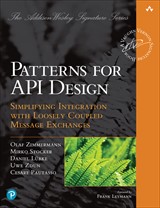
Published: 06 July 2025
Known Uses
This pattern is widely used in Dutch government and especially in the Dutch energy sector.
“Ketenpartners” (chain partners) in the energy sector include grid operators, suppliers, metering companies, service providers, and other market parties. These are distinct legal entities collaborating on shared processes and data exchange. This matches the definition of Community APIs, which are designed for a defined, closed group of external organizations rather than the general public. EDSN (Energy Data Services Netherlands) provides central platforms and governance for these APIs, ensuring all ‘ketenpartners’ have access to the same interfaces, documentation, and support. This is a hallmark of Community APIs, where access is managed and the API is not public but available to all approved community members. The way ketenpartners operate via EDSN’s platforms is a practical example of the Community API pattern in action.
Discussion Input
- Although both Community APIs and Partner APIs restrict access to a closed group and enforce strong security, they refer to distinct concepts (we believe): Partner APIs are built for formal B2B relationships under explicit partnership agreements. Community APIs enable broader collaboration among organizations sharing a common domain or purpose; participants may include non‑commercial or semi‑commercial entities, not just formal partners.
- On the pattern summary for Community API, the interfaces between bounded contexts in the backend are cited as examples of Community APIs. Depending on the user group and network zone that the API clients reside in, these interfaces could also be considered Public APIs, since they expose functionality outside their own context. For instance, the Customer Core context publishes an Open Host Service (OHS) that acts like a Public API.

Read the complete pattern on api-patterns.org